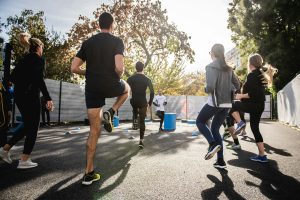Five of the Most Inspirational Books to Read in 2025 for Your Own Personal Development

Five of the Most Inspirational Books to Read in 2025 for Your Own Personal Development
Personal development is a journey that lasts a lifetime, and there are times when all we need is a book that is so strong that it can transform the way we think and fire our drive. It is possible that the perfect book may completely transform your life, whether you are looking to change your thinking, discover your actual purpose, or establish healthier habits.
The year 2025 sees the continuation of the evolution of motivating writing, which combines ageless wisdom with contemporary insights. A selection of five must-read motivational books that will assist you in realizing your full potential and making positive changes in your life is presented here.
1. By James Clear, the author of Atomic Habits
Even though it has been around for a while, Atomic Habits continues to be a highly recommended book for anybody who is interested in making changes that are long-lasting.
James Clear demonstrates how seemingly little everyday routines may lead to significant changes in one’s life.
- You should read it because it will teach you about the value of doing little, consistent acts.
- Learn how to break harmful habits and teach yourself how to create healthy habits.
- There are tools that are useful for anybody who is having trouble with discipline or attention.
2. Robin Sharma’s book “The 5 AM Club”
The book “The 5 AM Club” by Robin Sharma is a motivating handbook that highlights the need of getting up early in order to make the most of each day. The narrative is intertwined with practical guidance throughout the book.
Important Takeaways: Begin each day with a sense of concentration, happiness, and productivity.
Morning rituals have the power to mold your perspective and level of achievement. For the purpose of personal development, methods such as the 20/20/20 approach.
3. Brianna Wiest’s “The Mountain Is You”
Self-sabotage and emotional healing are also topics that are extensively covered in this book. The author, Brianna Wiest, brings to the attention of readers the ways in which their challenges may be converted into chances for development.
- One of the reasons it is so powerful is because it fosters emotional resilience and self-awareness.
- Aids in the identification and overcoming of limiting thoughts.
- This book is ideal for anybody who is on a quest to find themselves.
4. Ed Mylett’s “The Power of One More” is the winner.
The inspirational gem written by Ed Mylett provides an important lesson about the power of doing “just one more”—one more effort, one more attempt, and one more push toward achieving your achievements.
What you should take away is the fact that little efforts may lead to spectacular results.
Strengthening your mental fortitude and having faith in yourself.
Encourages you to take action even when you feel like giving up.
5. Oprah Winfrey and Arthur C. Brooks’s book “Build the Life You Want”
When it comes to creating a road map for happiness, this book, which was a bestseller in 2024 and continues to inspire readers in 2025, mixes research that is supported by scientific evidence with spiritual insight.
- Practical methods for achieving emotional well-being are going to be covered in this course.
- Learn how to live a life that is both balanced and purpose-driven.
- Oprah Winfrey, one of the most prominent voices in the world, shares her insights.
Instructions on How to Get the Most Out of Books That Inspire You
Just the first step is to read a book that is intended to motivate you. For genuine advantages:
- Take notes on the most important lessons.
- In each of the chapters, implement at least one of the actionable tips.
- When you are in need of a burst of inspiration, you should revisit these novels.
You may alter both your mentality and your life by reading the appropriate book. The titles listed above provide useful guidance, insights that have stood the test of time, and strong inspiration. These books are the ideal companions for your journey toward personal development in the year 2025, whether you are looking to improve your habits, triumph over challenges, or discover happiness of your own choosing.








